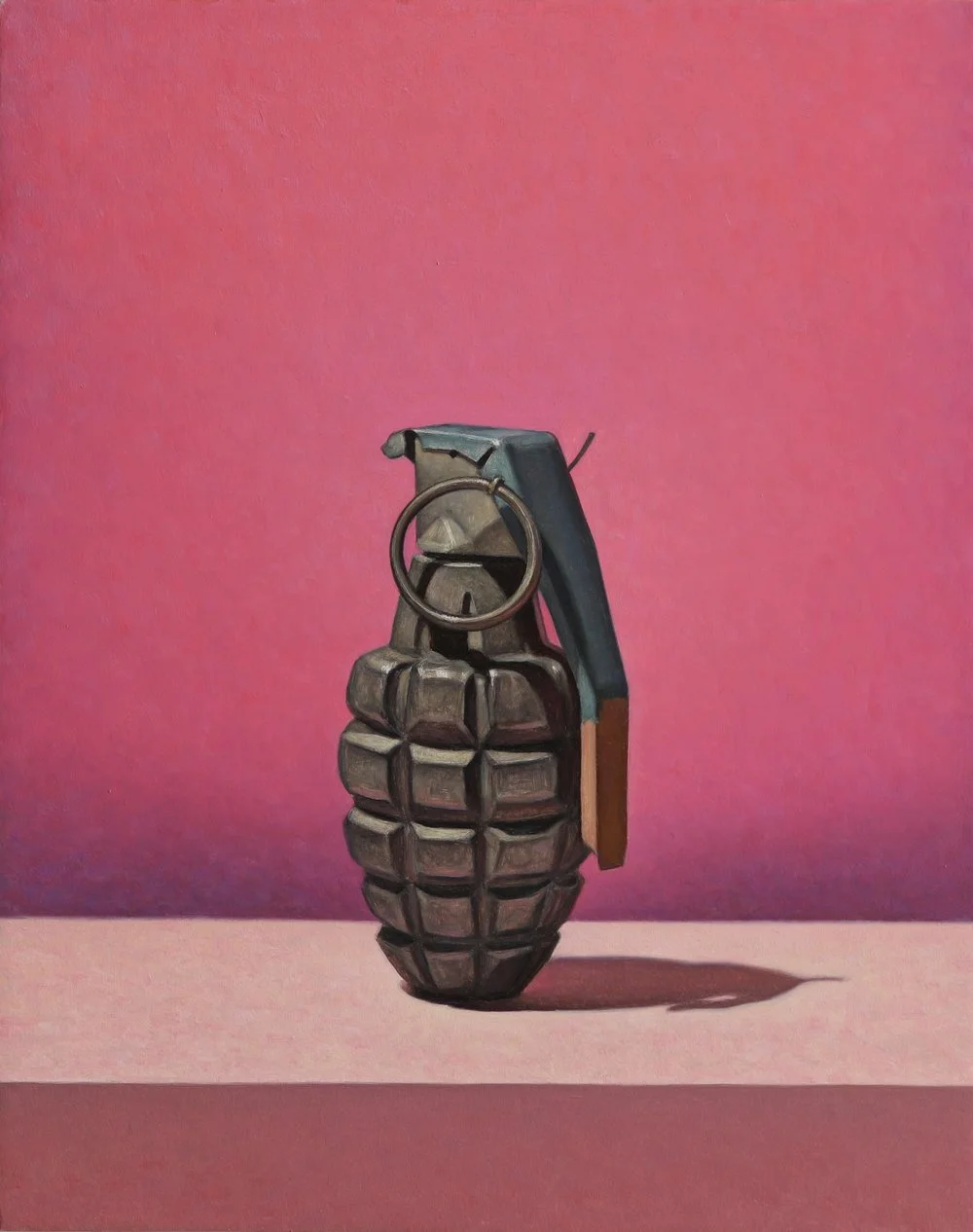Objects on Stage: Works by Tom Gregg
Tom Gregg’s body of work is a visual homage to objects. With vivid coloration and obsessive precision, his object-centric paintings weave together dreams, reality, and imagination. Gregg’s intensely profound yet remarkably unpretentious paintings are at once rooted in established tradition and on the cutting edge of contemporaneity.
Gregg’s sleeping children series is defined by contradiction and ambiguity. The large-scale oil paintings feature various assorted objects, all represented with meticulous accuracy. Among them are a teddy bear, a pair of scissors, a high-heeled pump, and an alarm clock, all placed delicately on a foregrounded shelf. Behind the shelves, cartoonish outlines of sleeping children loom against backgrounds of glowing violets and brilliant teals. Gregg imagines the sharper-than-life objects in the foreground to be the innocent, ephemeral images that weave through children’s dreams. To him, the paintings are peaceful and innocuous explorations of a child’s mysterious and delicate subconscious.
Left: Boy and Scissors, oil on panel, 47 x 39 in. Right: Girl and Branch, oil on panel, 47 x 39 in.
And yet, the paintings convey an unmistakably troubling quality. Dreams and reality seem to inverse on the canvas. The over-simplified children are too unstable, too minimalistic to represent reality; the painstakingly realistic objects before them are too life-like to represent a dream. The cartoonish lines of the children’s bodies combine with their peaceful, content expressions to form an ominously vulnerable quality. Fast asleep, the children are unsettlingly susceptible to danger, either dreamed or realized. In Gregg’s sleeping children paintings, dreams flirt casually with nightmares.
Two still life paintings, Pink Grenade and Little Duck, represent the artist’s career-long meditation on objects. Similar to the foreground of the sleeping children paintings, Gregg’s still life pictures represent scrupulously true-to-life objects on a simple shelf. Here, though, the shelves become stages, elevating and honoring the items they exhibit. Resting on their stages, the objects are quietly powerful and independent. Humans are at once absent and present in these works – though we do not see them, we feel their connections to the objects with which they interact.
Left: Little Duck, oil on panel, 12.5 x 10 in. Right: Pink Grenade, oil on panel, 22.5 x 17. 5 in.
In theory, the subjects of Pink Grenade and Little Duck are unrelated, even opposite; grenades inflict pain and destruction whereas toy ducks encourage playfulness and imagination. Yet the two paintings are so unwaveringly objective that the grenade appears no more or less ominous than the duck. The stage-like shelf and simple background of the still lifes remove the objects from their respective contexts. In Gregg’s painted world, objects are constant and unassuming. Only the subconscious assumptions of viewers assign meaning to Gregg’s objects; only these assumptions differentiate grenades from toy ducks.
Gregg’s objects are steady and understandable; his figures are abstracted, unstable, and ambiguous. He presents objects simply, accurately, and without bias, leaving it to the viewer to interpret and contextualize their significance. Quietly and profoundly, Tom Gregg’s object paintings exist outside of the chaotic world around them.




